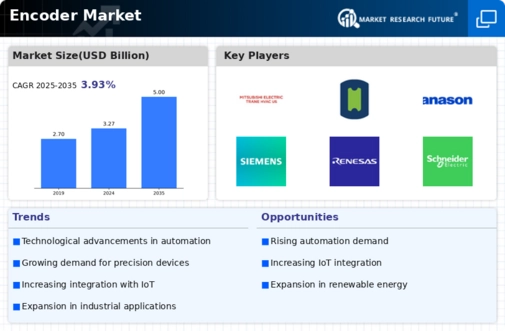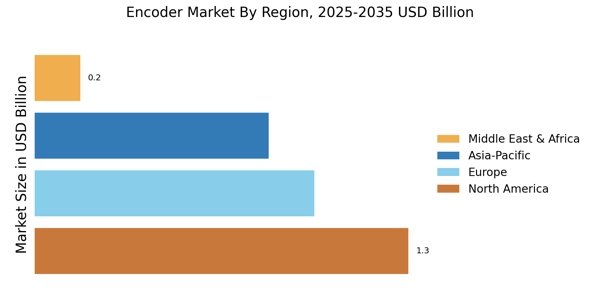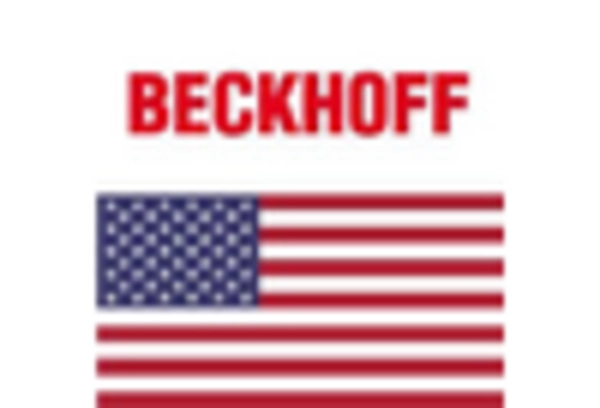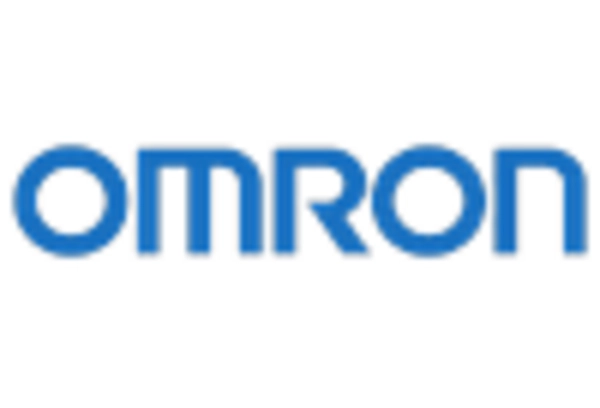Rising Demand for Automation
The Encoder Market is experiencing a notable surge in demand for automation across various sectors, including manufacturing, automotive, and robotics. This trend is driven by the need for enhanced efficiency and precision in operations. As industries increasingly adopt automated systems, the requirement for high-performance encoders becomes paramount. According to recent data, the automation sector is projected to grow at a compound annual growth rate of approximately 9% over the next five years. This growth is likely to propel the Encoder Market, as encoders play a critical role in providing feedback for motion control systems, thereby ensuring optimal performance and reliability.
Expansion of Robotics Applications
The Encoder Market is significantly influenced by the expansion of robotics applications in various fields such as healthcare, logistics, and agriculture. As robots become more prevalent in these sectors, the demand for precise motion control systems, which rely heavily on encoders, is expected to increase. The robotics market is anticipated to reach a valuation of over 100 billion dollars by 2026, indicating a robust growth trajectory. This expansion suggests that the Encoder Market will likely benefit from the rising need for advanced encoders that can provide accurate position and speed feedback, essential for the effective operation of robotic systems.
Growth in Electric Vehicle Production
The Encoder Market is poised to benefit from the rapid growth in electric vehicle (EV) production. As manufacturers shift towards sustainable transportation solutions, the demand for electric vehicles is projected to increase significantly, with estimates suggesting that EV sales could reach 30 million units annually by 2030. Encoders are integral to various EV components, including motor control and battery management systems. This growing trend indicates that the Encoder Market will likely see a substantial uptick in demand as automotive manufacturers seek to enhance the performance and efficiency of their electric vehicles through advanced encoder technologies.
Increased Focus on Precision Agriculture
The Encoder Market is also being driven by the increased focus on precision agriculture, which aims to optimize field-level management regarding crop farming. The adoption of advanced technologies, including drones and automated machinery, necessitates the use of high-precision encoders for accurate positioning and control. The precision agriculture market is expected to grow at a rate of around 12% annually, reflecting a rising trend towards data-driven farming practices. This growth suggests that the Encoder Market will likely experience heightened demand as agricultural stakeholders seek to implement more efficient and effective farming techniques through the integration of advanced encoder systems.
Advancements in Industrial Internet of Things (IIoT)
The Encoder Market is significantly impacted by advancements in the Industrial Internet of Things (IIoT), which facilitates the interconnectivity of devices and systems in industrial settings. As industries increasingly adopt IIoT solutions, the need for reliable and accurate data collection becomes critical. Encoders are essential components in IIoT applications, providing real-time feedback on machine performance and operational efficiency. The IIoT market is projected to grow substantially, with estimates suggesting a market size of over 1 trillion dollars by 2025. This growth indicates that the Encoder Market will likely see increased demand for encoders that can seamlessly integrate with IIoT platforms, enhancing overall operational capabilities.

















Leave a Comment